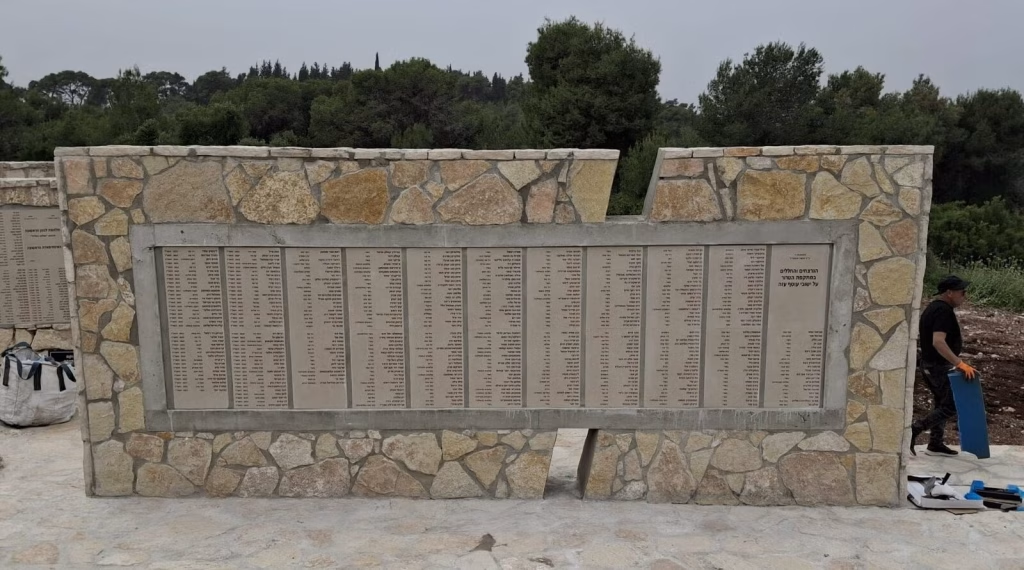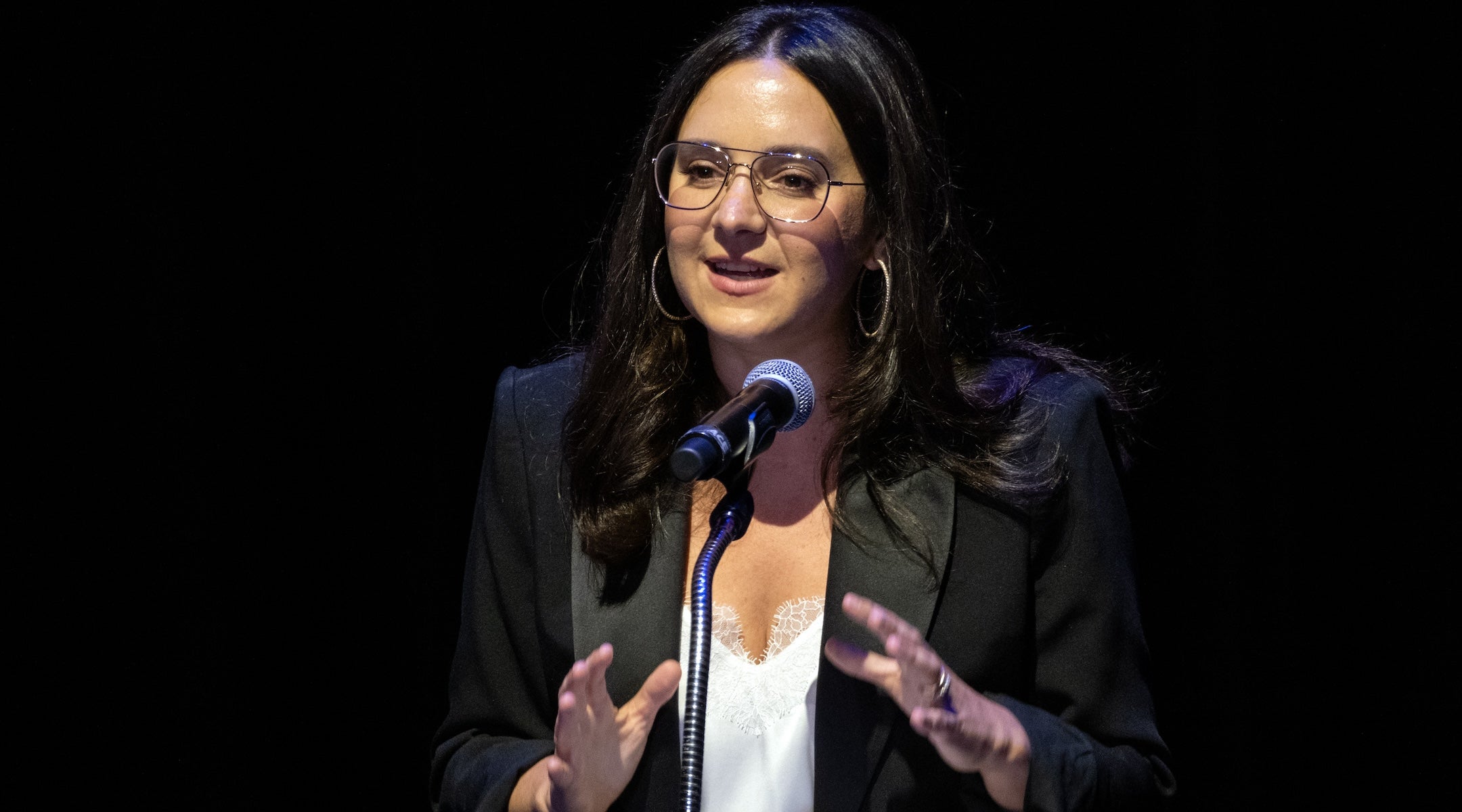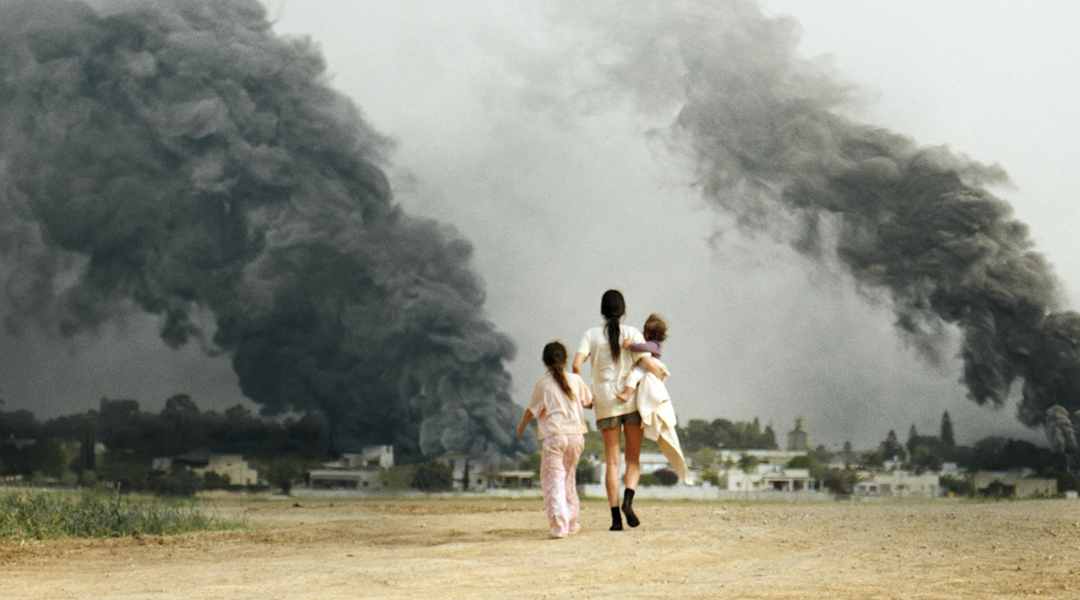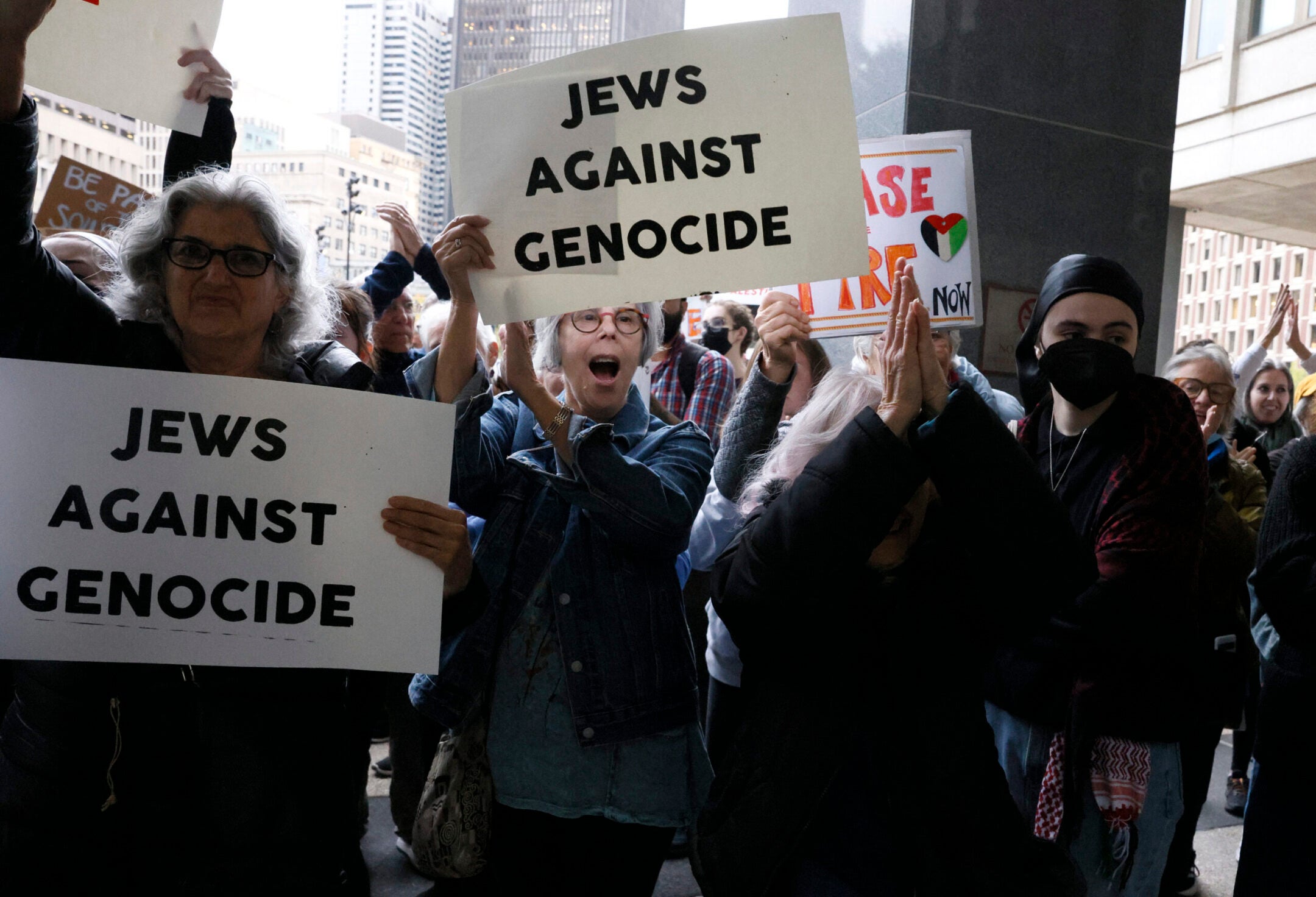Uncategorized
Two years after Oct. 7 shattered them, Israel’s border kibbutzim are drawing new dreamers

(JTA) — Two years after the Oct. 7 massacre, Israelis are moving into kibbutzim in numbers not seen for years, part of a deliberate effort to repopulate and rehabilitate communities devastated in the Hamas-led attack. The push is most visible along the Gaza border, but it extends to the north as well, where Hezbollah fire kept communities thinly populated for more than a year and a half.
Leaders of the movement speak of kibbutzim as the country’s living perimeter. Neri Shotan, who runs the Kibbutz Movement’s rehabilitation fund, invoked an old adage: If the country went dark and only kibbutzim stayed lit, their lights would trace the map of Israel. Roughly 100 of about 260 Israeli kibbutzim sit on the borders, a design Shotan said was meant to anchor the edges through civilian life rather than fortifications.
The scale of the damage remains stark. The movement counts 56 kibbutzim evacuated after Oct. 7 and says kibbutz communities lost 318 people in the attacks, close to a quarter of the roughly 1,200 killed that day. Some 40,000 kibbutz members were displaced.
A new wall listing more than 450 kibbutz members who died on Oct. 7 and in the subsequent Gaza war has been added to a longstanding memorial for kibbutzniks killed in acts of terror since Israel’s earliest days.

The state’s five-year plan for the Gaza periphery totals 19 billion shekels (US $5.75 billion) and a report released in September by the government’s Tekuma directorate, the agency tasked with rehabilitating the Gaza envelope, said 7.9 billion shekels had been allocated so far, including 525 million shekels this year for programs to encourage evacuated residents to return.
Around 90 percent of evacuated Gaza-border residents are back, according to the report, and more than 2,500 newcomers have moved into the region. Minister Zeev Elkin, who is overseeing the recovery, said the plan was to double the population to 120,000 in the coming years.
Yet some of the hardest-hit places are lagging. Only about a third of Nahal Oz’s residents have returned. Nir Oz and Be’eri are only now entering the rebuilding phase.
The reopening of the bakery and print shop at Be’eri, where more than 100 residents were killed and dozens were taken hostage, were hailed as major steps toward rebuilding. But many of the workers commute from a kibbutz 40 kilometers to the east, near Beersheba, where Be’eri’s displaced residents relocated.
And a ceremony to mark rebuilding at Nir Oz that featured Gadi Mozes, the octogenarian released from Hamas captivity in January who for many embodies the classic kibbutznik spirit, took place only in August, with workers placing the foundation then for new structures.

The Kibbutz Movement Rehabilitation Fund — set up within hours of the attack — positioned itself to fill gaps Shotan says the state has failed to address. It has raised roughly 160 million shekels to date, mostly from overseas donors.
Starting at 6 p.m. on Oct. 7, 2023, volunteers were handing out shoes to children who had fled barefoot, pressing the Interior Ministry to reissue identity cards lost in the wreckage and coordinating permissions and logistics for burials. In the months that followed, the fund placed evacuated children in schools, arranged ad hoc farm labour when reservist call-ups emptied crews and secured temporary housing. During June’s war with Iran, it set up an emergency volunteer hub that, among other tasks, delivered truckloads of mattresses to kibbutz shelters in the north.
The fund’s newest push is aimed at recruiting newcomers, in a project known as Chalutzi — a derivative of the Hebrew word for pioneer. Chalutzi serves as a clearinghouse and matchmaker between kibbutzim seeking members and newcomers looking for a place to live and volunteer. The project’s target is to relocate 1,000 families, with thousands of inquiries logged, alongside placements for young singles who want to live and work in border communities.
Among them is 29-year-old Ilan Gritsevsky, who in August left Tel Aviv for Kibbutz Nir Oz, where roughly a quarter of residents were murdered or taken hostage on Oct. 7 and where only six houses emerged unscathed. He is part of a cohort of about 50 young adults connected to the Hashomer Hatzair youth movement who are moving in as construction starts. For now they live in temporary housing financed by partners that include the rehabilitation fund, with new homes being built.
City life, Gritsevsky said, while fun, felt anonymous: “The only thing you share with your neighbours is a postal code.” The kibbutz offered shared purpose and a sense that neighbours were partners in rebuilding. But the deeper impulse, he said, was defense by presence. Called up on Oct. 7 to reserve duty in Nahal Oz, he described his relocation to Nir Oz as the natural next stage of service.
“At the beginning of the war I had to protect our borders with weapons, and today I feel that settling on our borders is a meaningful form of protection, for the country’s physical border and for the kind of country we want to be,” he said.
The new crop of young adults will establish an educational community, taking on informal education roles alongside the school day. The need is acute. Since Oct. 7, problems that were once uncommon among kibbutz teenagers, including substance and alcohol use, have become more visible, alongside broader trauma. Tekuma has earmarked 115 million shekels for personal, family and social services programs and 61 million shekels for trauma and bereavement, funding family-support services, parent-child centers, targeted assistance for at-risk families, prevention of domestic violence, treatment units for sexual assault, and programs for children, older adults and people with disabilities.

In April, Nir Oz reached a state agreement for 350 million shekels to rehabilitate the community – becoming the last of the Oct. 7–affected sites to do so – but according to Shotan, it falls short of the 500 million shekels residents say is needed. KKL-JNF, which is financing rehabilitation projects nationwide, approved 75 million shekels for Nir Oz as part of a 750 million shekel national package, helping to narrow the gap.
Shotan said selling the idea of kibbutz life to families and young people is not difficult, because education, community and social support are big draws, and the cost of living in the periphery is far less than in Israel’s population centers.
But ideology, he said, was doing most of the work in driving people to move. “You have to be a real Zionist to do it. People who don’t have Zionism as a basic value won’t come.”
He traced the idea back to the first kibbutzniks of the 1910s and to families like his, whose grandparents in the 1920s helped found Shefayim — the central Israeli kibbutz that housed evacuees from Kfar Aza after Oct. 7.
The same logic, he said, held on Oct. 7. In his telling, front-line communities have again become a part of Israel’s defense.
“The kibbutzes were relevant then and they’ll become even more relevant in the future. Our defense rests with them, not through the army. If it wasn’t for Nirim, or Nir Oz, Hamas terrorists would have reached Tel Aviv.”
But not all newcomers framed their move as classic Zionism. Maya, a founder of Torenu (“Our Turn”), a grassroots movement under the Dror-Israel youth movement, helped dozens of young people move to Gaza-border kibbutzim to staff classrooms, youth clubs and fields.
“We didn’t come to save anyone, and I don’t like the word ‘rehabilitate.’ We work alongside the people who were here long before us and who will probably be here after us,” the Kfar Saba native told the Hebrew-language Israel Hayom daily. “Some may call it Zionism, but that is not what guided me. I just felt more people were needed here to help get the wheels turning again.”
Maya gave up a job at a Tel Aviv startup to relocate to Kibbutz Re’im, along with eight other young adults. The community is back to over 180 families (out of 200 pre-war), and a further 10 new families have since joined.
The kibbutz’s secretary, Zohar Livneh-Mizrahi, said the new arrivals had changed the mood.
“It isn’t something to take for granted, but I see how strongly people want to be involved and lend a hand,” she said. “It moved me from the get-go, and still does. We are writing a new chapter in the history of the kibbutz and of Zionism.”
Repopulation of the northern kibbutzim is the Chalutzi project’s next frontier, Shotan said. Damage there is extensive, and the return has been patchier, with 30 percent of the kibbutz members still living elsewhere.
Israeli authorities put northern property losses at about 9 billion shekels, but only about 2.2 billion shekels had been disbursed by mid-year, leaving a large gap that locals say is slowing work on housing, public buildings and farms. Tenufa, the northern framework intended as a counterpart to Tekumah, lacked sufficient funds and authority to push projects, and kibbutz leaders say they have to work across more than a dozen ministries to secure approvals.
Agriculture could take four to five years to regrow, yet without permits in place, little has started. Some of the kibbutzes have grown tired of waiting. At Yiftach, where rockets destroyed about 90 percent of fields, kibbutz members chose to bypass the state and funded clearing and replanting on their own.
External shocks have compounded the strain, Shotan said. Houthi attacks in the Red Sea have disrupted shipping and forced longer routes, raising costs and in some cases, spoiling the exports. Economic boycotts levied at Israel have cut demand in certain European markets and new tariffs by the Trump administration have further scrambled trade flows and pricing.
Back south in Nir Oz, Gritsevsky joined 200 others for a communal Rosh Hashanah meal. He described the mood among the new arrivals and veterans as a mix of resolve and strain.
“We’re all still living with this tension that on the one hand, it isn’t over – the grief is still with us and will keep being with us, but at the same time, we want to stand up and take responsibility to rebuild,” he said.
The post Two years after Oct. 7 shattered them, Israel’s border kibbutzim are drawing new dreamers appeared first on The Canadian Jewish News.
Uncategorized
Bari Weiss, Free Press founder who started as antisemitism crusader, named editor-in-chief of CBS

(JTA) — Bari Weiss, the journalist who first rose to prominence for her campus campaign alleging antisemitism two decades ago, has been named editor-in-chief of CBS News, a stunning ascent that marks one of the most consequential appointments in American media in recent years.
The appointment came as Paramount Skydance, led by David Ellison, announced its $150 million purchase of The Free Press, the publication Weiss founded in 2022. Weiss will oversee both outlets as editor-in-chief, reporting directly to Ellison. The move marks a major shakeup for a legacy news division long associated with mainstream liberalism and a bet on Weiss’s brand of provocative centrism.
Ellison’s involvement adds another layer of intrigue. The son of Larry Ellison, the Oracle founder known for his pro-Israel philanthropy, David has in recent months gained attention as his father helped spearhead a bid to acquire TikTok’s U.S. operations. The forced sale, mandated by a new U.S. law aimed at separating the platform from its Chinese ownership, has drawn political scrutiny and elevated the Ellisons’ influence at the intersection of media, tech, and geopolitics.
For Jewish observers, Weiss’s trajectory carries special resonance. Her public identity has long intertwined with Jewish causes, Israel advocacy and debates over antisemitism and free speech. Under her leadership, The Free Press has become a prominent voice on the American Jewish experience, particularly its coverage and commentary supporting Israel and condemning rising anti-Israel activism after Hamas’ Oct. 7, 2023, attack on southern Israel.
Born in Pittsburgh and educated at Columbia University, Weiss first emerged as a student activist in the early 2000s when she campaigned against professors she accused of anti-Israel bias, a battle that foreshadowed later campus wars over Zionism and academic freedom. A film she co-produced called “Columbia Unbecoming” documents her account.
Raised in a Reform Jewish household in the Squirrel Hill neighborhood, her connection to the community became national news with the 2018 shooting at the Tree of Life synagogue, the congregation where she had her bat mitzvah. The massacre, she wrote, was an “alarm bell” that shook her out of a “holiday from history.” She channeled the tragedy into a book, “How to Fight Anti-Semitism,” in 2019.
Now 41, Weiss has positioned herself as a defender of open inquiry within liberal institutions and a critic of what she saw as left-wing intolerance. She rose through the editorial ranks at The Wall Street Journal and The New York Times, where she became known for her critiques of “cancel culture.” Her 2020 resignation letter from the Times, alleging bullying and ideological conformity, went viral and turned her into a hero for many self-described centrists.
When she launched The Free Press, Weiss promised to create a home for “free thought and fearless reporting.” The site quickly grew into a digital media powerhouse, attracting major investors and millions of readers, but also attracting criticism from those who say Weiss’s project is a polished rebranding of right-wing media.
Now she will have the chance to bring her brand of journalism to a much broader audience, as the top editor overseeing coverage at a legacy news organization whose properties include “60 Minutes” and “Sunday Morning.”
“As proud as we are of the 1.5 million subscribers who have joined under the banner of The Free Press — and we are astonished at that number — this is a country with 340 million people. We want our work to reach more of them, as quickly as possible,” Weiss wrote in a letter to readers on Monday. “This once-in-a-lifetime opportunity allows us to do that.”
The post Bari Weiss, Free Press founder who started as antisemitism crusader, named editor-in-chief of CBS appeared first on The Forward.
Uncategorized
On Paramount+, Apple TV, HBO and more, Oct. 7 emerges as a cinematic subgenre

(JTA) — Two years after the Hamas attacks on Israel, the tragedy of Oct. 7 has become its own cinematic sub-genre. Filmmakers have rushed to bear witness, survivors have taken up cameras, and streaming platforms are now filled with documentaries and dramatizations that revisit, reimagine, and attempt to process the day’s horrors.
From raw documentaries of the Nova music festival to scripted miniseries debuting this month, these works show how Israelis, and Jews around the world, are still grappling with a single day that reshaped their lives.
The desert rave that became the site of mass murder has inspired a cluster of films, each offering a different register of witness.
“We Will Dance Again” is a documentary that offers a chronological, minute-by-minute account of the Oct. 7, 2023, Hamas attack on the Supernova Music Festival in Israel. The film is constructed primarily through the first-hand testimonies of over a dozen survivors, interweaving their accounts with footage they recorded on their cell phones and video recovered from the cameras of the attackers. The documentary is available to stream Paramount+.
“#Nova,” now on Prime Video, adds new layers of forensic detail by synchronizing video captured by the victims on their personal cell phones with footage recovered from Hamas body-worn cameras. “Supernova: The Music Festival Massacre,” on Apple TV and YouTube, stitches together real-time footage and interviews to convey the disorienting chaos of the first hours.
A more intimate companion piece, “Tattooed for Life,” which played across many film festivals but is not currently streaming, follows tattoo artist and survivor Liraz Uliel as she memorializes fellow festival-goers through a shared fractal tattoo design, an act of mourning turned into community ritual.
Other filmmakers have turned their attention to what happened in the homes, fields and kibbutzim of southern Israel.
The PBS documentary “After October 7: A Personal Journey to Kfar Aza” offers a close look at one of the hardest-hit communities, combining news footage with deeply personal reflections on grief, displacement and rebuilding.
Currently in theaters, “The Road Between Us: The Ultimate Rescue” chronicles retired general Noam Tibon’s desperate drive south to save his son, journalist Amir Tibon, and his family. Blending firsthand testimony with security footage of real-time chaos, the film recounts the former general’s 10-hour, high-stakes mission across a country under siege to rescue his loved ones from their home in Kibbutz Nahal Oz. The film won the People’s Choice Award when it premiered at the Toronto International Film Festival after some turmoil.
Two scripted productions expand these same themes. “Red Alert” (known in Hebrew as “First Light”) is a four-part miniseries that dramatizes five intertwined true stories of civilians, police, and first responders, and is executive-produced by Lawrence Bender, of “Pulp Fiction” fame. The series weaves these chaotic narratives together in a race-against-time format and premieres on Paramount+ on Oct. 7, making it one of two major scripted series to debut on the second anniversary of the attack.
The second series, “One Day in October,” an anthology series based on seven distinct personal stories, will debut on HBO Max on Oct. 7, with all seven episodes available for the U.S. audience.
Many documentaries are meant as a bulwark against denial.
“Bearing Witness to the October 7th Massacre,” a 47-minute film, compiled by the Israeli military, compiles raw footage from multiple sources, including Hamas body-cam recordings, dash cams, CCTV, and victims’ phone videos, to create a chronological record of the atrocities. Due to its graphic nature, the film has not been released to the general public and is only shown in private, invitation-only screenings for policymakers, journalists, diplomats, and community leaders around the world.
A documentary created by Sheryl Sandberg, “Screams before Silence,” address the sexual violence and gender-based atrocities perpetrated by Hamas during the attacks. It is intended to break what critics have described as a moral silence on these war crimes and is streaming on YouTube.
“The Killing Roads” does narrow its focus to the attacks on Route 232 and Highway 34, which were the main arteries where Hamas gunmen ambushed and killed approximately 250 people fleeing the Nova festival and surrounding communities. The film has been released for free viewing on platforms like YouTube and a dedicated website to combat denial of the massacre.
The PBS documentary “October 7th: Through Their Eyes” is focused on a network of Israeli volunteer archivists who immediately set out to preserve the large volume of digital evidence, including social media posts, videos, and messages, from survivors and victims before the content could be deleted or lost. The goal of their project, October7.org, is to create a widely accessible, permanent database of first-hand testimonies.
Several recent works focus on the ordeal of captivity and survival.
“The Children of October 7,” streaming on Paramount+ and hosted by activist Montana Tucker, profiles eight young survivors (ages 11-17) who share harrowing, unscripted testimonies of narrowly escaping death, witnessing the murder of family members, or enduring captivity, and highlights their resilience in the face of unspeakable loss.
Meanwhile, the short documentary “A Letter to David” sees the filmmaker revisit his onetime actor and friend, David Cunio, who remains held in Gaza along with his brother, Ariel Cunio, after being kidnapped from Kibbutz Nir Oz. The film is a collage of family footage and archival material that functions as a cinematic plea for his return.
As the shockwaves of Oct. 7 spread around the world, another crop of films has examined how the attacks reverberated across the Jewish Diaspora and within movements for and against Israel’s war.
The documentary “October 8” (previously titled “October H8te”) captures the anti-Israel protests that erupted across U.S. cities and college campuses in the days and weeks following the attack. It is streaming on Apple TV and Amazon. “The New Jew: Days of War” follows Israeli comedian Guri Alfi as he travels across North America to explore Jewish identity and division in the aftermath.
“Torn: The Israel-Palestine Poster War on NYC Streets” documents the dueling “Kidnapped” and “Free Gaza” posters that turned city lampposts into symbolic battlefields. And “There Is Another Way” portrays the Israeli–Palestinian group Combatants for Peace, whose members struggle to uphold their belief in nonviolence even as both societies harden in grief.
The post On Paramount+, Apple TV, HBO and more, Oct. 7 emerges as a cinematic subgenre appeared first on The Forward.
Uncategorized
Poll: 40% of American Jews believe Israel is committing genocide in Gaza

(JTA) — Multiple polls have found that about 60% of Americans believe Israel is committing genocide in Gaza, a biting charge that Israel and the United States reject.
Now, for the first time, a poll has taken the pulse of U.S. Jews specifically — and found that 39% of them hold the opinion.
The new poll by the Washington Post, conducted in early September prior to President Donald Trump’s latest breakthrough in ceasefire negotiations between Israel and Hamas, also found that 61% of American Jews said that Israel has committed war crimes against Palestinians.
While allegations that Israel is committing a genocide in Gaza have been lodged against the country by international bodies, human rights groups and pro-Palestinian activists, the poll suggests that charge is now resonating more widely among even U.S. Jews — those who are most likely to have a personal connection to Israel.
The poll found that many American Jews still hold strong ties to Israel. Three-quarters of American Jews surveyed said that Israel’s existence is vital for the long-term future of the Jewish people, while over half said that they were “very” or “somewhat” emotionally attached to Israel.
But emotional ties to Israel were far weaker among younger respondents. While 68% of American Jews over 65 said they were emotionally connection to Israel, among those aged between 18 to 34, that share dropped to 36%. Younger Jews were also more likely to call Israel’s actions in Gaza a genocide, with half of Jews aged 18 to 34 using the term.
The poll found that Jews were almost evenly split over Israel’s actions in Gaza, with 46% approving and 48% opposing. That divide was also split sharply on partisan lines, with 85% of Jewish Republicans approving compared to 31% of Jewish Democrats.
The majority of American Jews also blame Hamas more than Israel for the civilian death toll in Gaza, with two-thirds of American Jews blaming Hamas for starting the war and operating in civilian areas of Gaza, according to the poll.
The poll also found that criticism of Israeli Prime Minister Benjamin Netanyahu had significantly increased among American Jews in recent years. It found that 68% expressed a negative opinion of the Israeli leader, with 48% rating his leadership as “poor,” compared to 54% disapproving of him in a 2020 Pew Research Center poll.
On the continuation of the conflict between Hamas and Israel, vast majorities of the American Jewish community assigned blame to both Hamas and Netanyahu, with 91% saying Hamas bears responsibility and 86% saying Netanyahu bears responsibility.
As several European countries recognized Palestinian statehood last month, the poll also found that over half of American Jews believe that Israel and an independent Palestinian state can coexist peacefully with each other.
Looking to the relationship between the United States and Israel, about half of respondents said that U.S. support for Israel is at about the right level. A third of respondents said that the United States is too supportive of Israel, a share that jumped 10 percentage points since the 2020 Pew poll, and 20% said it is not supportive enough.
The Washington Post poll surveyed 815 American Jews from Sept. 2 to 9 and had a margin of error of 4.7 percentage points.
The post Poll: 40% of American Jews believe Israel is committing genocide in Gaza appeared first on The Forward.


